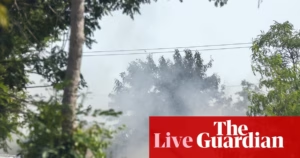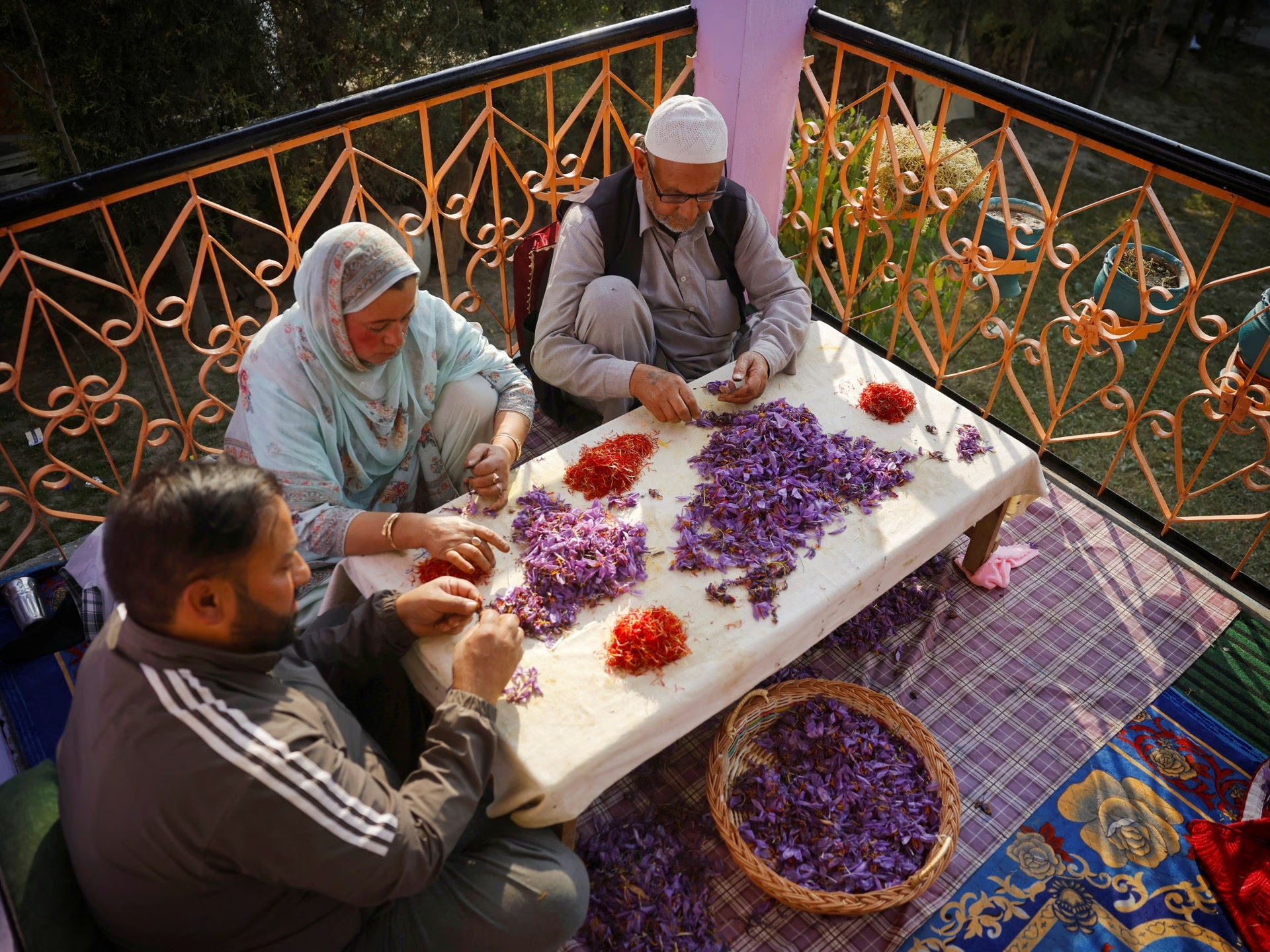Before dawn, at 4 AM, in Pampore’s saffron fields of Pulwama district in Indian-administered Kashmir, Bashir Ahmad Bhat, 52, steps out with a flashlight. The cold air carries the scent of earth, but his heart sinks upon seeing his cherished saffron corms, which he had nurtured for months, destroyed and eaten overnight.
“It’s like war,” Bashir says, his voice laced with frustration. “We battled climate change, fought against low market prices.” “But who would have imagined we’d have to battle porcupines?”
For generations, farmers like Bashir have cultivated saffron in Pampore, which is the heart of India’s saffron industry and the third-largest in the world, after Iran and Afghanistan. The land is sacred, producing some of the world’s finest saffron, admired for its deep crimson hue and potent aroma, thanks to an unmatched 8.72 percent crocin content.
These farmers, known for resiliency, have faced numerous challenges – from a long-standing conflict with Indian security forces, to issues of smuggling and adulteration affecting prices.
Recently, the most expensive spice in the world faces an unforeseen threat in Kashmir: the Indian crested porcupine. Once confined to the forests, these protected animals, affected by deforestation, habitat loss, and climate change, have turned to saffron farms for food, digging deep into the earth to find saffron bulbs.
Kashmir’s saffron production had already suffered, decreasing from 15.97 metric tonnes in 1997-98 to just 3.48 metric tonnes in 2021-22, owing to erratic rainfall, inadequate irrigation, and urban encroachment on farmland. The damage from porcupines has exacerbated the crisis, leading to annual losses of up to 30% of saffron crops for farmers.
By 2024, federal government data showed that Kashmir’s saffron yield had declined to 2.6 metric tonnes, threatening a $45m industry that supports 32,000 families.
Bashir, estimating his loss at 300,000 Indian rupees ($3,500) worth of saffron over two years, lays bare the gravity of the issue: “At first, we thought it was stray animals. But when we started finding porcupine quills in the fields, we knew it was a bigger problem.”
The region’s forest department attempted to solve the issue last year with an organic repellent spray, which initially worked but later proved ineffective.
Farmers have become innovative in their defenses, using thorny bushes, floodlights, and even night patrols. However, these methods have not hindered the porcupines, who continuously burrow and return.
“Real action is needed, not just words,” says Abdul Rashid, another saffron farmer. “If this continues, Kashmiri saffron will vanish.”
The issue extends beyond local significance. Kashmir’s saffron is a global commodity, and any disruption can create ripples in international markets.
As Kashmir’s yields continue to decline, traders fear that Iran’s dominance in the global saffron market will grow even stronger. Iran’s saffron, which accounts for 85% of global production, has a lower crocin content but stands to benefit from Kashmir’s struggles.
Bilal Ahmed, a saffron trader, emphasizes the economic impact. A 5% loss to porcupines equates to a 29-million-rupee ($350,000) annual loss, potentially making Kashmiri saffron a luxury only the wealthy can afford.
Researchers and experts are now contemplating how to combat this growing rodent threat.
Mir Muskan Un Nisa, a research scholar at Sher-i-Kashmir University of Agricultural Sciences and Technology, highlights that habitat destruction is reducing the food sources for porcupines in their natural ecosystems. This makes saffron corms an easier and more accessible food option.
She suggests protective measures like deep-set wire fencing to prevent porcupines and other rodents from digging under them and advises against relying on electric fencing due to its high cost for many farmers.
Scientists are also developing biodegradable repelents that mimic the scents of natural predators to scare away porcupines—offering a more sustainable solution.
As dawn awakens Pampore, Bashir Ahmad gathers the porcupine quills left in his fields. He understands that the cycle will repeat tonight. The battle to protect Kashmir’s ‘red gold’ continues, but there is a fear that this fight could lead to a future without it, as porcupines continue to threaten the very existence of saffron cultivation.
Not only are porcupines a growing problem, but climate change is worsening their impact. Warmer winters, once a rare occurrence in Kashmir, now mean extended activity periods for porcupines, causing more harm to saffron farms.
Natural predators play a vital role in ecological balance, regulating porcupine populations. However, habitat destruction and human activity have led to a decline in these predators, allowing the porcupine population to surge.
Scientists and agricultural experts are exploring immediate solutions, such as fencing and trapping, as well as introducing controlled reintroduction of natural predators, though this remains controversial due to the potential risks to livestock and human settlements.
In the search for safeguarding saffron crops, researchers are looking into planting specific species that emit scents porcupines avoid and applying pepper-based solutions around the bulbs.
Farmers point to the need for government intervention, with compensation for crop losses and subsidies for fencing among the necessary measures to mitigate the crisis. They stress that the future of their livelihood and an important part of Kashmir’s heritage hangs in the balance.
Source: https://www.aljazeera.com/features/2025/4/16/kashmirs-famed-saffron-faces-devastating-new-terror-porcupines?traffic_source=rss







